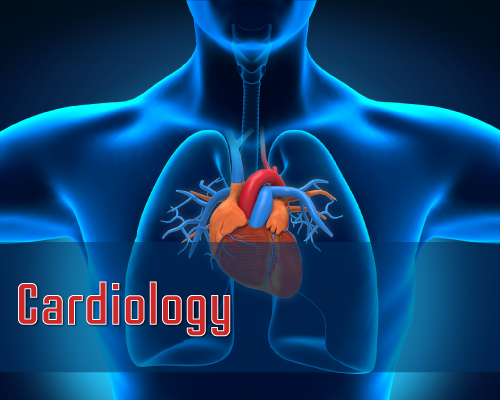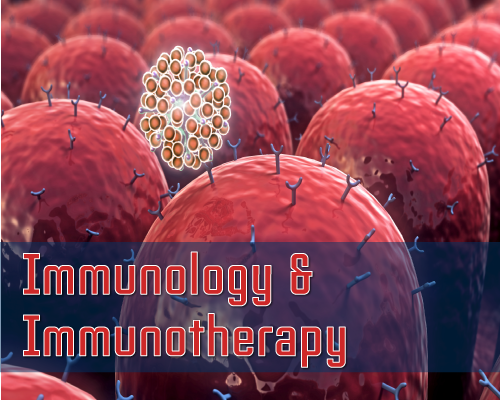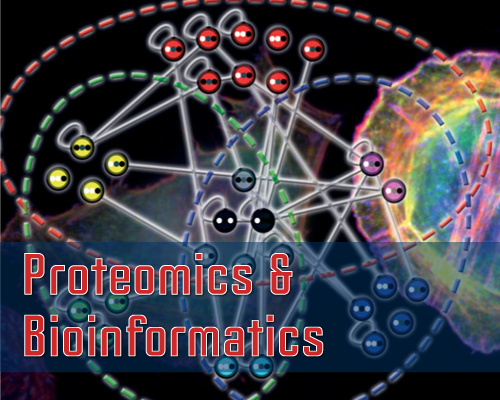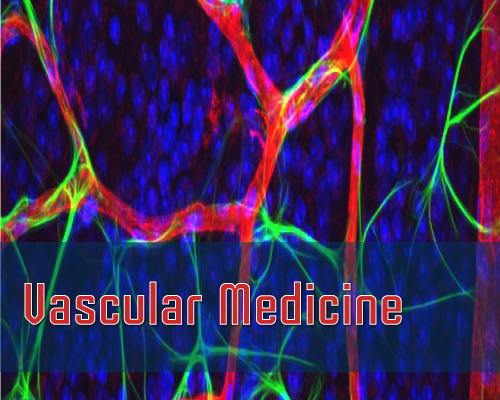Guan J1,2*, Yang P1,2, Turner C2,5, Nicholson LFB2,3, Dragunow M1,2, Faull RLM2,3 and Waldvogel HJ2,3
1Pharmacology and Clinical Pharmacology Department, School of Medical Sciences, Faculty of Medical and Health Sciences, University of Auckland
2Centre for Brain Research, and the Department of Anatomy with Radiology, Faculty of Medicine and Health Science, University of Auckland, New Zealand
3Department of Anatomy and Medical Imaging, Faculty of Medical and Health Sciences, University of Auckland, New Zealand
4Department of Anatomical Pathology, LabPlus, Auckland City Hospital Auckland, New Zealand
*Address for Correspondence: Dr Jian Guan, the Pharmacology and Clinical Pharmacology, the University of Auckland, Private Bag 92019, Auckland 1023, New Zealand, Tel: 0064-9-9236134; Fax: 006493737497; Email: [email protected]
Dates: Submitted: 30 December 2015; Approved: 09 May 2016; Published: 11 May 2016
Citation this article: Guan J, Yang P, Turner C, Nicholson LFB, Dragunow M, et al. Vascular Degeneration in Parkinson's Disease. Alzheimers Parkinsons Dis Open Access. 2016;2(1): 001-005.
Copyright: © 2016 Guan J, et al. This is an open access article distributed under the Creative Commons Attribution License, which permits unrestricted use, distribution, and reproduction in any medium, provided the original work is properly cited.
Parkinson's disease (PD) is the second most common neurodegenerative condition in the aging human population [1]. While neuronal degeneration is well characterized in human cases of PD [2], there has been very limited information regarding vascular changes, until two recent publications from our own research group [3,4]. The difference between the peripheral circulation to that of the brain is that the capillaries in the brain consist of endothelial cells adjoined by tight junctions, the hydrophobic basement membrane, the pericytes and the astrocyte end feet [5] forming the blood-brain barrier (BBB), that functionally protect the brain from harmful substances entering from the peripheral circulation. To evaluate vascular changes that are specific to PD we compared the differences in the endothelium, basement membranes and astrocytes in several brain regions between age-matched controls and human cases of PD which had not developed dementia. From the results of these studies we have identified degeneration of endothelial cells while the basement membrane is maintained in human PD. Elevated astrocytosis is associated with leakage of the BBB but is limited mainly to the brain regions showing blood vessel loss associated with brain aging such as the caudate nucleus.
Factor VIII is an immunohistochemical marker for the cytoplasm of endothelial cells and can be used to visualize the cytoarchitecture and morphology of endothelial cells in the capillaries. The most interesting and distinctive finding is the formation of 'laddering' in the endothelium described as 'endothelial clustering' in both aged matched and PD cases. Statistical analysis demonstrated a significant increase in the laddering in capillaries in PD cases, that is associated with degeneration of endothelial cells, leading to the loss of capillaries. The mechanism of 'cluster' formation however is not at all clear and needs to be further investigated.
The integrity of the intact capillary network is essential for effective vascular function. Using image analysis we are able to compare the capillary length, cross sectional size, interconnections and average numbers of capillaries. Compared to the age-matched controls, the capillaries in PD cases are shorter in average length, fewer in number, and more fragmented with reduced branching, suggesting the possibility of breakdown of the capillary network in PD cases. The analysis of these multiple parameters enabled us to see more detailed changes in vasculature and the patterns of capillary loss. Even though the increase in endothelial clusters and the pathology of endothelial degeneration are uniform in all brain regions that we have analyzed, the patterns of changing capillaries appeared to be different when the analysis separates the shorter capillaries (<50μm and more fragmented) from the longer ones (>50μm). For example, while there are reduced vessel numbers in the substantia nigra (SN) of PD cases, the PD associated loss of vessel number in the middle frontal gyrus (MFG) is only true for the vessels longer than 50μm. In contrast, the analysis of vessel length suggests the loss in capillaries in the SN is mainly in the longer vessels.
The average size of a capillary is 5-10 μm in diameter. In a separate experiment, the changes in capillary size are determined by measuring the diameter and the cross sectional area of vessels in the SN, locus coeruleus (LC) and Raphe nucleus (RN). While the average diameter is less than 10 μm in the control cases the average diameter of vessels is larger (>10 μm) in PD cases, particularly in the RN and SN. The increase in size of vessels is supported by the measurement of the cross sectional area of the vessels. Using 10 μm as the cut off for measuring the capillaries (<10 μm) and small arteries/veins (>10 μm) the PD cases have fewer capillaries in the RN and more small arterioles/veins (in the LC) with a significant reduction in the ratio of small/large vessels throughout all nuclei. The data suggest that vessel degeneration in PD cases is primarily at the level of capillaries, that may be more vulnerable to degeneration than the small arteries/veins, and/or to the enlarged capillaries as a result of vascular remodelling [6].
The transformation of the microvasculature from primarily capillaries to predominantly small arterioles/venules has a profound effect on oxygen diffusion. Arterioles (and venules) are much larger vessels with, on average, 3 layers of endothelial cells as well as smooth muscle cells and pericytes [7]. In normal tissue the majority of oxygen diffusion occurs from the capillary vessels consisting of only one layer of endothelial cells [7]. As a consequence of the loss of the capillary bed, tissues receive less oxygen leading to damage through processes such as the production of free radicals due to the inability to regenerate antioxidant enzymes, or insufficient oxygen available for oxidative metabolism.
Despite a uniform increase in endothelial 'clusters' in the SN, CN and MFG of PD cases, there are brain region dependent differences in vessel density, vessel length and vessel branches between the control and PD groups with significant degenerative changes in some brain regions, but not in others. For example, there is a consistent decrease in all parameters measured in the CN of the age-matched control cases compared to the brain regions of SN and MFG. As a result there is no further degeneration of the capillaries in the CN of PD cases compared to the age-matched control cases. This lack of 'degeneration' in the CN of the PD cases is clearly due to the age-related loss in vessel density, length and branches. The age related loss of brain vessels has been reported previously in aged brains [8]. In addition to the hippocampus, the striatum is relatively more sensitive to age-related changes in structure [9,10] and function [11], and this is also true in other age-related clinical conditions [12]. Thus, the vessel changes observed in the SN are likely to be more specific to PD pathology while the loss of vessels in the CN may be a combination of the pathology of aging (11) and PD. The frontal cortex, a brain region that is affected in PD, with Lewy bodies present, may share some similar pathology with AD in terms of neuronal loss [13], and perhaps in vascular degeneration. Wide-spread cortical hypoperfusion has been reported at the early stage of PD [14].
Vascular remodeling and re-networking takes place constantly even under conditions of neurodegeneration, and insufficient vascular remodeling contributes to neuronal degeneration and functional decline. The changes in the vasculature of age-matched controls can be a complex mix of vessel degeneration associated with old age and vascular pathology as part of systemic vascular diseases, for example in hypertension, diabetes and obesity [10,11]. Thus the interpretation of vascular changes in the aging senile brain is complicated and the data difficult to interpret, which in turn makes the comparison with respect to young controls somewhat unreliable [15]. Thus, we have not included young control groups in our studies.
Apart from providing nutrients and removing metabolic wastes, the capillaries in the brain serve as a barrier to protect the brain from peripheral harmful substances. The loss of BBB function allows pro-inflammatory factors to enter the brain, which can contribute to neuronal dysfunction [16] and neuronal degeneration in Alzheimer disease and possibly also in PD [17]. Furthermore, as part of the neuronal-glial-vascular unit, endothelial cells are involved in neurogenesis [18], promote neuronal survival and produce neurotrophic factors [19], whereas many neurotransmitters also regulate vascular functions [20,21]. Structurally, astrocytes, a glial phenotype, form part of the capillary wall and maintain both neuronal and vascular functions in the brain.
We have additionally characterized the vascular degeneration in PD by evaluating the changes in the basement membrane (BM), astrocytes, BBB integrity and the association with neuronal degeneration using the same human cases used for evaluating endothelial cell degeneration. Collagen IV staining was used to visualize the vascular structure associated with the BM, and we analysed the vascular architecture using the same image analysis protocols that were used for identifying the significant changes in endothelial-associated vascular architecture [3]. Unexpectedly, neither the number nor the length of collagen IV labelled capillaries are different between age-matched controls and PD cases [4]. However, we see profound morphological changes in the BM, characterized as collapsed capillaries or string vessels [4,22], in which the capillaries are labelled with collagen IV without endothelium. String capillaries exist in normal brain as part of the process of endothelial cell turnover during vascular remodeling particularly in developing brain [22] and brains with neuronal degeneration [22]. Capillaries with laddering morphology [3] are often found next to the string vessels. This suggests that the increase in string vessel formation may be a consequence of endothelial cell degeneration caused by an imbalance in vascular degenerative and regenerative processes. The increase in string vessels has been reported in Alzheimer disease cases [23,24], however, it is different from the PD cases, as the loss of BM was also found in Alzheimer diseases [25]. In contrast, capillary density has recently been reported to be increased in human cases of Huntington's disease [26,27] where collagen IV was used for labelling the BM [28] with reduced vascular size [26]. Thus, increased string vessel formation without loss of BM may be a pathology specific to vascular degeneration in PD [4].
There has been a rapid increase in research on changes in capillaries in brains affected by neurological diseases. The interpretation of results on capillary changes should be based on the precise structure labelled since the changes in the endothelium can be different from changes in the BM [3]. Multiple markers specific for the various components of capillaries are essential for an objective view of vascular changes.
Given that string vessels do not function as blood vessels, the increased string vessel formation can be an indicator of a compromised blood supply that can in turn contribute to neuronal dysfunction and degeneration in PD. As extracellular matrix, the BM plays a critical role in vascular re-modelling, for example in promoting endothelial cell proliferation, migration and capillary sprouting [29].
Astrocytes form an essential component of capillaries, and play a critical role in vascular re-modelling [30,31] and neuronal protection [32,33]. We found a massive elevation in GFAP positive astrocytes in the CN, with a hyperactive morphology. Interestingly the elevated astrocytosis is only found in the brain regions where there is no further PD associated vascular degeneration. We have discussed earlier that the endothelial degeneration in CN is an age related change in both PD and age-matched controls [3]. Thus the elevated astrocytosis observed in the CN of the PD cases may be a protective and/or angiogenic response that prevents further loss of endothelial cells in PD cases [3]. However it is known that angiogenesis can be a double edged sword, as newly formed vessels can lead to BBB leakage, that occurs in neurodegenerative conditions such as Alzheimer disease [34].
Fibrinogen leakage from plasma into brain tissues is a reliable marker for dysfunction of the BBB [34-36]. Activation of microglia and astrocytes is closely related to BBB dysfunction, and infiltration of plasma fibrinogen has been reported in Alzheimer disease [37] and other neurological conditions with BBB dysfunction [35,36,38,39]. The concentration of fibrinogen is low in the CSF of PD patients [40] and there is no increase in infiltration of plasma fibrinogen in the SN, where there is clear neuronal degeneration. It is interesting to observe that the fibrinogen infiltration is profound only in the CN of PD, where there is an age related endothelial degeneration and a PD related elevated astrocytosis. It could be that the elevated astrocytosis may play a role in preventing further loss of endothelium in PD and by promoting an angiogenic process in the endothelium that leads to loss of BBB integrity. Given the role of astrocytes in angiogenesis [30] and inflammation [41] the BBB leakage in the CN could be a collective result of age and secondary pathology of PD or as a beneficial response of astrocytes in removing fibrinogen [39].
Given that changes in the vasculature can vary between brain regions, it is interesting that the loss of neurons is found uniformly in the SN, CN and MFG in PD. Degeneration of dopamine neurons has been well documented in the SNc of PD patients [42]. Although there is loss of dopamine neurons in the SN, TH expression in most SNc neurons appeared to be increased. This may be a compensatory response to the loss of dopamine neurons by increasing protein expression, as dopamine neurons are highly plastic in PD [42,43]. Although degeneration of dopamine neurons in the SN is the most prominent pathology of PD, neuronal degeneration can affect other brain regions in advanced disease, for example the CN and cortical areas [24]. The neuronal degeneration in the CN and MFG brain regions are also more profound in PD cases.
Atrophy of the CN in human PD cases has been described previously [44]. However, apart from changes related to degeneration of the dopamine system, for example reduced TH terminals, dopamine receptors and transporters, [45] our knowledge of neuronal degeneration in the CN is rather limited. Neuronal degeneration in the frontal cortex is well established in PD cases, particularly those with dementia [46]. In our study, the extent of neuronal loss is similar in the CN and MFG; however, we only found the elevation of astrocytes and leakage of the BBB in the CN, not in the MFG. Although both activation of astrocytes and dysfunction of the BBB may contribute to neuronal death, our data suggest that these processes are not the immediate cause of the neuronal degeneration seen in PD.
The further characterization of vascular degeneration, particularly the capillaries in PD human cases is an on-going research project. The mechanisms underlying the vascular degeneration may be closely associated with the impaired ability in vascular remodeling, for example, the function and survival of pericytes and related capillary cytoarchitecture. It is difficult to identify whether vascular degeneration is primary or secondary to neuronal degeneration. Nevertheless loss of the vascular network clearly contributes to the pathogenesis of the neurodegenerative process.
In conclusion, vascular degeneration in PD appears to be the result of endothelial cell degeneration, while retaining the capillary basement membrane. Increased string vessel formation suggests a role for vascular hypoperfusion in the progression of PD. Leakage of the BBB may be associated with astrocytosis in the CN, which appears to be a pathological change secondary to the initial lesion in PD. The features of vascular degeneration in PD vary between different brain regions, and is reflected by the differing extents of neuronal degeneration, astrocytosis, endothelial cell degeneration and dysfunction of the BBB in each region.
References
- de Lau LM, Breteler MM. Epidemiology of Parkinson's disease. Lancet Neurol. 2006 Jun;5(6):525-35.
- Lindner MD, Cain CK, Plone MA, Frydel BR, Blaney TJ, Emerich DF, et al. Incomplete nigrostriatal dopaminergic cell loss and partial reductions in striatal dopamine produce akinesia, rigidity, tremor and cognitive deficits in middle-aged rats. Behav Brain Res. 1999 Jul;102(1-2):1-16.
- Guan J, Pavlovic D, Dalkie N, Waldvogel HJ, O'Carroll SJ, Green CR, et al. Vascular degeneration in Parkinson's disease. Brain Pathol. 2013 Mar;23(2):154-64.
- Yang P, Pavlovic D, Waldvogel H, Dragunow M, Synek B, Turner C, et al. String Vessel Formation is Increased in the Brain of Parkinson Disease. Journal of Parkinson's disease. 2015 Oct 3;5:15.
- Schack-Nielsen L, Michaelsen KF. Breast feeding and future health. Current opinion in clinical nutrition and metabolic care. 2006 May;9(3):289-96.
- Gale CR, O'Callaghan FJ, Godfrey KM, Law CM, Martyn CN. Critical periods of brain growth and cognitive function in children. Brain. 2004 Feb;127(Pt 2):321-9.
- O'Kusky J, Ye P. Neurodevelopmental effects of insulin-like growth factor signaling. Frontiers in neuroendocrinology. 2012 Aug;33(3):230-51.
- Kesner RP. Behavioral functions of the CA3 subregion of the hippocampus. Learn Mem. 2007 Nov;14(11):771-81.
- Waldvogel HJ, Curtis MA, Baer K, Rees MI, Faull RLM. Immunohistochemical staining of post-mortem adult human brain sections. Nat Protoc. 2006;1(6):2719-32.
- Jacobson J, Zhang R, Elliffe D, Chen K, Mathai S, McCarthy D, et al. Co-relation of cellular changes and spatial memory during aging in rats Experimental Gerontology 2008;43:928-38.
- Zhang R, Kadar T, Sirimanne E, MacGibbon A, Guan J. - Age-related memory decline is associated with vascular and microglial. Behav Brain Res. 2012;235(2):210-7.
- Abe Y, Yamamoto T, Soeda T, Kumagai T, Tanno Y, Kubo J, et al. Diabetic striatal disease: clinical presentation, neuroimaging, and pathology. Intern Med. 2009;48(13):1135-41.
- Minelli A, Bellezza I, Grottelli S, Galli F. Focus on cyclo(His-Pro): history and perspectives as antioxidant peptide. Amino Acids. 2008 Aug;35(2):283-9.
- Wei HH, Lu XC, Shear DA, Waghray A, Yao C, Tortella FC, et al. NNZ-2566 treatment inhibits neuroinflammation and pro-inflammatory cytokine expression induced by experimental penetrating ballistic-like brain injury in rats. Journal of neuroinflammation. 2009;6:19.
- Ali MA, Strandvik B, Palme-Kilander C, Yngve A. Lower polyamine levels in breast milk of obese mothers compared to mothers with normal body weight. Journal of human nutrition and dietetics : the official journal of the British Dietetic Association. 2013 Jul;26 Suppl 1:164-70.
- Giovannucci E. Insulin-like growth factor-I and binding protein-3 and risk of cancer. Horm Res. 1999;51(Suppl 3):34-41.
- Renehan AG, Zwahlen M, Minder C, O'Dwyer ST, Shalet SM, Egger M. Insulin-like growth factor (IGF)-I, IGF binding protein-3, and cancer risk: systematic review and meta-regression analysis. Lancet. 2004 Apr 24;363(9418):1346-53.
- Hilson JA, Rasmussen KM, Kjolhede CL. High prepregnant body mass index is associated with poor lactation outcomes among white, rural women independent of psychosocial and demographic correlates. Journal of human lactation : official journal of International Lactation Consultant Association. 2004 Feb;20(1):18-29.
- Herminghuysen D, Cook C, Thompson H, Bostick D, Lee F, Stokes L, et al. The gut-brain peptide cyclo(His-Pro) is secreted in a pulsatile fashion in fasting humans. Neuropeptides. 1994 Apr;26(4):273-80.
- The Health of New Zealand Adults 2011/12. http://www.health.govt.nz/system/files/documents/publications/health-of-new-zealand-adults-2011-12-v2.pdf2013.
- Wojcicki JM. Maternal prepregnancy body mass index and initiation and duration of breastfeeding: a review of the literature. Journal of women's health (2002). 2011 Mar;20(3):341-7.
- Brown WR. A review of string vessels or collapsed, empty basement membrane tubes. J Alzheimers Dis. 2010;21(3):725-39.
- Iadecola C. Neurovascular regulation in the normal brain and in Alzheimer's disease. Nat Rev Neurosci. 2004 May;5(5):347-60.
- Braak H, Ghebremedhin E, Rub U, Bratzke H, Del Tredici K. Stages in the development of Parkinson's disease-related pathology. Cell and tissue research. 2004 Oct;318(1):121-34.
- Hunter JM, Kwan J, Malek-Ahmadi M, Maarouf CL, Kokjohn TA, Belden C, et al. Morphological and pathological evolution of the brain microcirculation in aging and Alzheimer's disease. PLoS One. 2012;7(5):e36893.
- Drouin-Ouellet J, Sawiak SJ, Cisbani G, Lagace M, Kuan WL, Saint-Pierre M, et al. Cerebrovascular and blood-brain barrier impairments in Huntington's disease: Potential implications for its pathophysiology. Ann Neurol. 2015 Aug;78(2):160-77.
- Waldvogel HJ, Dragunow M, Faull RL. Disrupted vasculature and blood-brain barrier in Huntington disease. Ann Neurol. 2015 Aug;78(2):158-9.
- Lin CY, Hsu YH, Lin MH, Yang TH, Chen HM, Chen YC, et al. Neurovascular abnormalities in humans and mice with Huntington's disease. Exp Neurol. 2013 Dec;250:20-30.
- Yurchenco PD. Basement membranes: cell scaffoldings and signaling platforms. Cold Spring Harbor perspectives in biology. 2011 Feb;3(2).
- Salhia B, Angelov L, Roncari L, Wu X, Shannon P, Guha A, et al. Expression of vascular endothelial growth factor by reactive astrocytes and associated neoangiogenesis Brain Res. 2000 Nov 10 Jul;883(1):87-97.
- Gnanaguru G, Bachay G, Biswas S, Pinzon-Duarte G, Hunter DD, Brunken WJ. Laminins containing the beta2 and gamma3 chains regulate astrocyte migration and angiogenesis in the retina. Development (Cambridge, England). 2013 May;140(9):2050-60.
- Takahashi M, Macdonald RL. Vascular aspects of neuroprotection. Neurol Res. 2004 Dec;26(8):862-9.
- Koyama Y, Michinaga S. Regulations of astrocytic functions by endothelins: roles in the pathophysiological responses of damaged brains. Journal of pharmacological sciences. 2012;118(4):401-7.
- Cortes-Canteli M, Zamolodchikov D, Ahn HJ, Strickland S, Norris EH. Fibrinogen and altered hemostasis in Alzheimer's disease. J Alzheimers Dis. 2012;32(3):599-608.
- Freitas-Andrade M, Carmeliet P, Charlebois C, Stanimirovic DB, Moreno MJ. PlGF knockout delays brain vessel growth and maturation upon systemic hypoxic challenge. J Cereb Blood Flow Metab. 2012 Apr;32(4):663-75.
- Freeman R, Niego B, Croucher DR, Ostergaard Pedersen L, Medcalf RL. t-PA, but not desmoteplase, induces a plasmin-dependent opening of a blood-brain barrier model under normoxic and ischaemic conditions which can be reversed within a limited time frame. Brain Res. 2014 Mar 24;1565C:10.
- Ryu JK, McLarnon JG. A leaky blood-brain barrier, fibrinogen infiltration and microglial reactivity in inflamed Alzheimer's disease brain. Journal of cellular and molecular medicine. 2009 Sep;13(9A):2911-25.
- Ryu JK, McLarnon JG. VEGF receptor antagonist Cyclo-VEGI reduces inflammatory reactivity and vascular leakiness and is neuroprotective against acute excitotoxic striatal insult. Journal of neuroinflammation. 2008;5:18.
- Hsiao TW, Swarup VP, Kuberan B, Tresco PA, Hlady V. Astrocytes specifically remove surface-adsorbed fibrinogen and locally express chondroitin sulfate proteoglycans. Acta Biomater. 2013 Jul;9(7):7200-8.
- Maarouf CL, Beach TG, Adler CH, Shill HA, Sabbagh MN, Wu T, et al. Cerebrospinal fluid biomarkers of neuropathologically diagnosed Parkinson's disease subjects. Neurol Res. 2012 Sep;34(7):669-76.
- More SV, Kumar H, Kim IS, Song SY, Choi DK. Cellular and molecular mediators of neuroinflammation in the pathogenesis of Parkinson's disease. Mediators of inflammation. 2013;2013:952375.
- Calne DB, Zigmond MJ. Compensatory mechanisms in degenerative neurologic diseases. Insights from parkinsonism. Arch Neurol. 1991 Apr;48(4):361-3.
- Donnan GA, Woodhouse DG, Kaczmarczyk SJ, Holder JE, Paxinos G, Chilco PJ, et al. Evidence for plasticity of the dopaminergic system in parkinsonism. Mol Neurobiol. 1991;5(2-4):421-33.
- Apostolova LG, Beyer M, Green AE, Hwang KS, Morra JH, Chou YY, et al. Hippocampal, caudate, and ventricular changes in Parkinson's disease with and without dementia. Movement disorders : official journal of the Movement Disorder Society. 2010 Apr 30;25(6):687-95.
- Waters CM, Peck R, Rossor M, Reynolds GP, Hunt SP. Immunocytochemical studies on the basal ganglia and substantia nigra in Parkinson's disease and Huntington's chorea. Neuroscience. 1988 May;25(2):419-38.
- Narayanan NS, Rodnitzky RL, Uc EY. Prefrontal dopamine signaling and cognitive symptoms of Parkinson's disease. Rev Neurosci. 2013;24(3):267-78.
Authors submit all Proposals and manuscripts via Electronic Form!




























